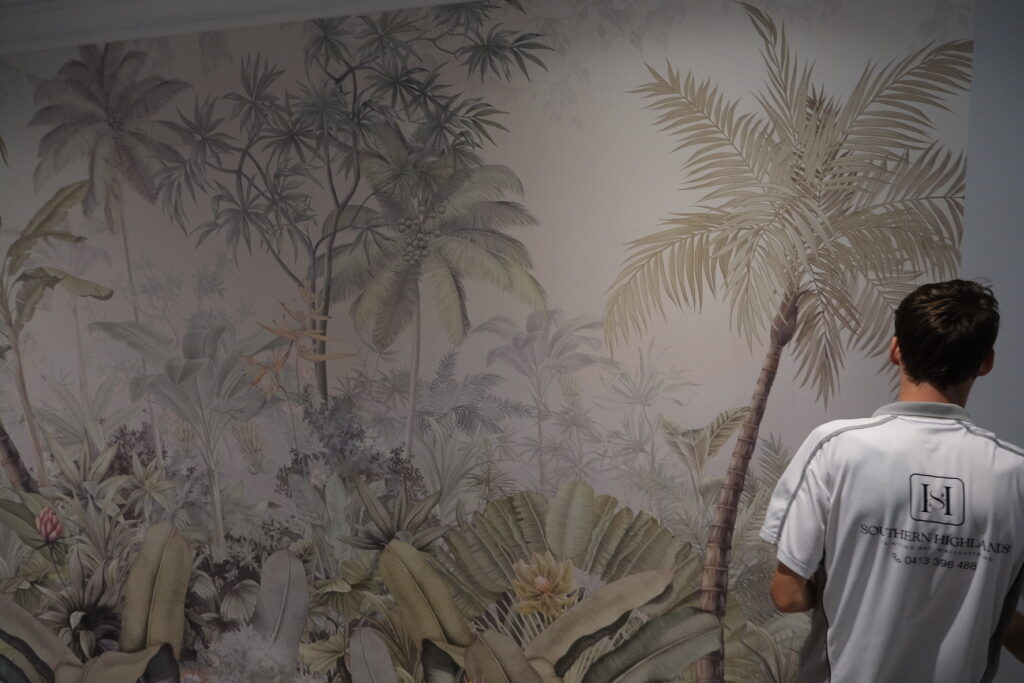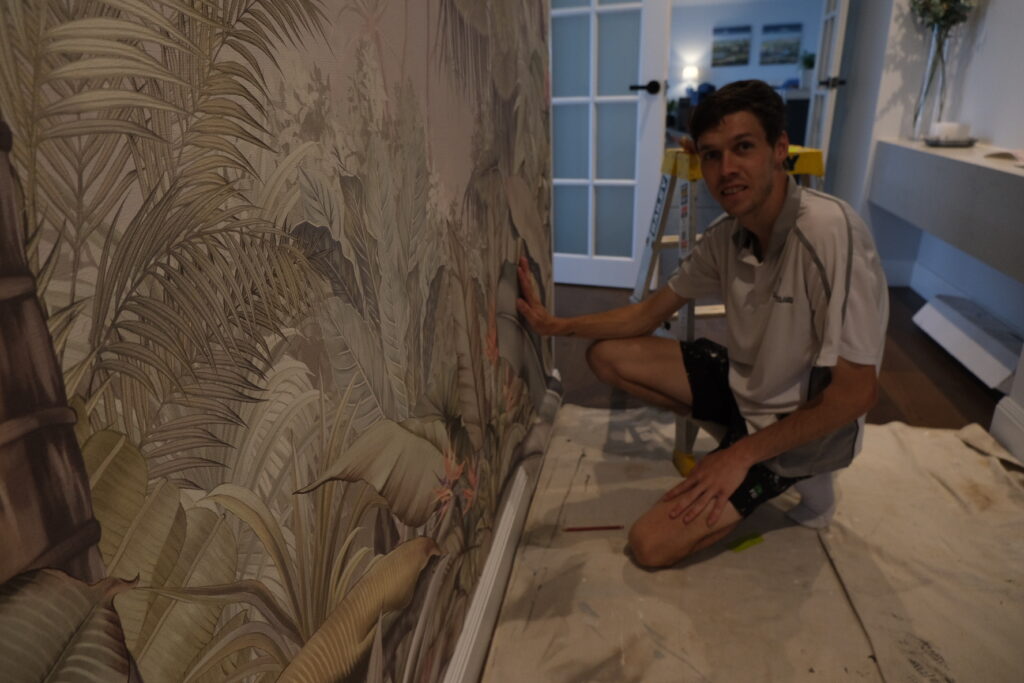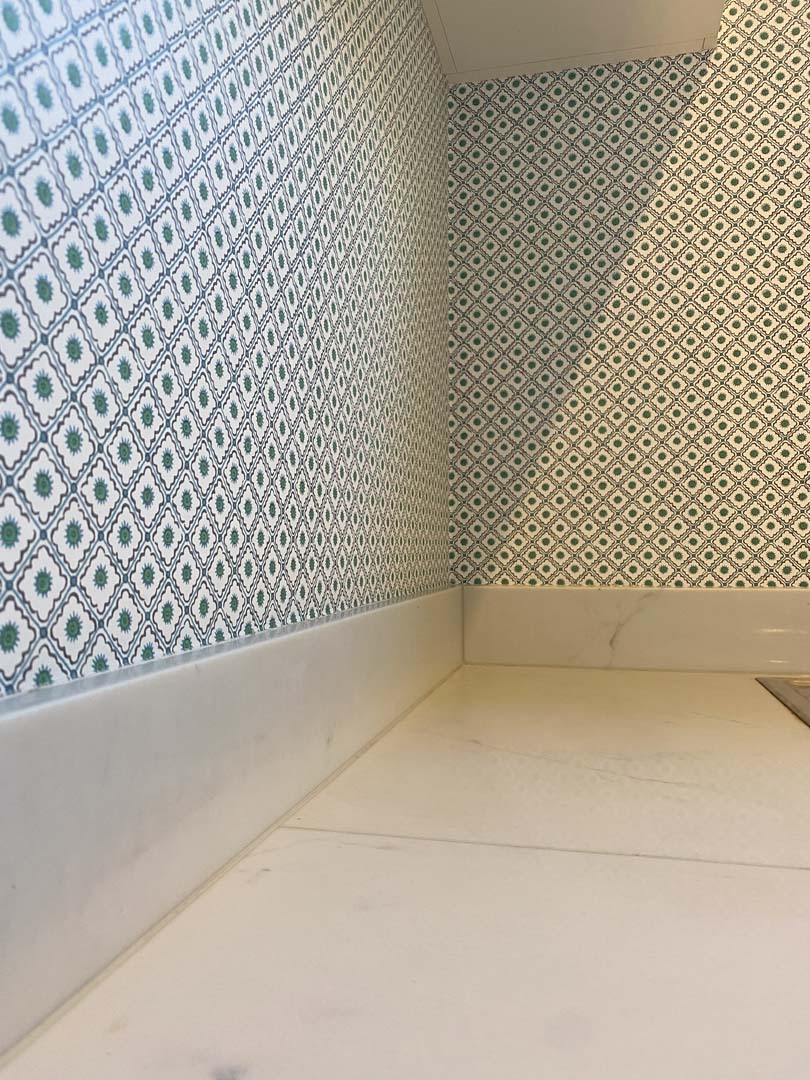You’ve been staring at that blank wall for months, picturing how a splash of colour or a bold pattern could completely change the room. Then you start looking at options — and now you’re torn. Do you try the newer, DIY-friendly peel-and-stick wallpaper that’s all over Instagram, or stick with the classic traditional kind?
Having worked with both, Southern Highlands Painting and Wallpapering have seen the highs and lows each one can bring. Peel-and-stick can be a weekend project that turns out beautifully — or it can peel back your patience as quickly as it went up. Traditional wallpaper can deliver stunning, long-lasting results, but it does demand more time, skill, and preparation.
In this guide, you’ll get a clear, side-by-side breakdown of both styles: how they’re applied, how they hold up, what they cost, and where each one really shines. By the end, you’ll know exactly which option works best for your home, your budget, and your appetite for DIY.
Contact Us Today For a Free Quote

What’s the Difference Between Peel-and-Stick and Traditional Wallpaper?
Peel-and-stick wallpaper is exactly what it sounds like — a self-adhesive material that comes with a backing you peel off before applying directly to the wall. Think of it like a giant sticker for your walls. It’s designed for easy application and removal, making it popular with renters, DIY beginners, and anyone who likes to change their décor often. You typically don’t need paste, water, or professional help — just a steady hand and a smoothing tool to press out any bubbles.
Traditional wallpaper doesn’t come with adhesive built in. Instead, it requires paste (either pre-applied and activated with water, or brushed on separately) to stick to the wall. It’s been the standard for decades and offers a huge range of textures, finishes, and durability levels. Because the adhesive bond is stronger, traditional wallpaper tends to last longer and is better suited for high-traffic or high-humidity areas.
Key differences at a glance:
| Feature | Peel-and-Stick | Traditional Wallpaper |
| Adhesive | Built-in, self-adhesive backing | Paste or water-activated adhesive |
| Installation | DIY-friendly, minimal tools | More time and skill required |
| Removal | Easy, usually damage-free | More effort, can damage walls if rushed |
| Durability | Short to medium term | Long-term, more hard-wearing |
| Ideal For | Rentals, feature walls, quick updates | Permanent décor, textured or luxury looks |
By understanding how each type works, you’ll be in a better position to weigh the trade-offs when it comes to installation, maintenance, and lifespan.
Ease of Installation — Which is Simpler for DIY?
If you’ve ever heard horror stories about wallpapering gone wrong, they almost always come from the installation stage. The tools, the paste, the awkward ladder balancing — it can feel like a test of patience as much as a design project.
Peel-and-stick was created to avoid most of that. You don’t need glue, buckets, or brushes — just measure, cut, peel, and press. The adhesive backing lets you reposition panels if you make a mistake, which is a lifesaver for lining up patterns. The trade-off? The material can stretch or crease if you pull too hard, and getting long strips perfectly straight still takes a steady hand. In small spaces or for feature walls, it’s about as simple as wallpaper gets.
Traditional wallpaper is less forgiving. The paste needs to be applied evenly (either directly on the wall or on the paper), and each panel has to be carefully placed to avoid bubbles, wrinkles, or mismatched seams. Depending on the type, you might also need to let the paste “book” (rest) before hanging. While not impossible for a beginner, it’s definitely more time-consuming and benefits from having an extra set of hands — or hiring a pro if you want a flawless finish.
Installation takeaway:
-
- Best for quick DIY: Peel-and-stick — minimal tools, less mess, easy to reposition.
-
- Best for perfect, long-term results: Traditional wallpaper — but often easier with professional installation.
Removal and Wall Damage — Which Comes Off Cleaner?
One of the biggest fears people have about wallpaper is the day it has to come down.
Peel-and-stick is marketed as removable, and in most cases, it lives up to that promise. To take it off, you simply lift a corner and peel slowly. On smooth, well-prepared walls (clean, primed, and painted), it usually comes away without leaving residue or pulling off paint. The key is not to rush — peeling too quickly can tear the wallpaper or pull paint, especially on older or poorly prepared surfaces. For stubborn spots, a little heat from a hairdryer can soften the adhesive and make removal easier.
Traditional wallpaper is a different story. Because it’s bonded with paste, removal often involves water, steam, or a wallpaper stripping solution. The process can be slow and messy, especially if multiple layers have been applied over the years. If the wall wasn’t primed before the wallpaper went up, there’s a higher chance of damaging the plaster or drywall underneath during removal.
Removal takeaway:
-
- Peel-and-stick: Quick, generally damage-free, but only if the wall was in good condition before installation.
-
- Traditional: More effort, often messier, and higher risk of wall damage — but proper prep at installation can make removal easier later.
Durability and Longevity — Which Lasts Longer?
When it comes to how well each type stands the test of time, the difference is clear.
Peel-and-stick is designed for temporary or medium-term use. In low-traffic areas, it can look great for several years, but it’s more prone to peeling at the edges, especially in rooms with fluctuating temperature or humidity. Kitchens, bathrooms, and sun-drenched walls can shorten its lifespan — the adhesive can soften in heat or lose grip in damp conditions. It’s perfect for short-term design updates, but less suited to a “set it and forget it” approach.
Traditional wallpaper is built for the long haul. With proper installation and care, it can last 10–15 years or more without losing its appeal. The paste bond is much stronger than self-adhesive backing, and many traditional wallpapers are more robust in their materials, offering better resistance to scratches, scuffs, and fading. Certain vinyl or coated papers are even made for high-humidity areas, making them a better choice for bathrooms or busy kitchens.
Durability takeaway:
-
- Peel-and-stick: Best for temporary looks or spaces you plan to update often.
-
- Traditional: Best for long-term investment and areas where durability matters most.
Cost Comparison — Which is Better Value for Money?
Wallpaper costs vary widely depending on the brand, material, and design complexity, but there are some general patterns when comparing peel-and-stick to traditional options.
Peel-and-stick tends to be more expensive per metre. In Australia, you can expect to pay anywhere from $300+ per roll or panel set, with coverage usually between 1.5–3 m² per roll. Because it’s a DIY-friendly product, you’ll likely save on installation costs, which can make the overall project more affordable for smaller spaces or feature walls.
Traditional wallpaper is generally cheaper per metre, often $150 to $300 per roll for standard designs, with each roll covering 5–10 m². However, installation is where costs can climb. Professional wallpapering in Australia can range from $300 to $600 per m², depending on the complexity of the pattern and wall condition. For large rooms or intricate designs, labour can easily become the biggest expense — but the trade-off is a flawless finish that lasts years longer.
Cost takeaway:
-
- Peel-and-stick: Higher material cost per metre, but lower or no labour costs for DIY jobs.
-
- Traditional: Lower material cost, but higher overall spend if hiring a professional — offset by longer lifespan.

When to Choose Peel-and-Stick
Peel-and-stick wallpaper shines in situations where flexibility and convenience matter more than long-term durability.
Best scenarios for peel-and-stick:
-
- Rentals: You can personalise your space without risking damage to walls (provided you prep and remove it carefully).
-
- Short-term style changes: Great for seasonal updates or when you like to change your décor regularly.
-
- Feature walls: Ideal for small, contained spaces where you want impact without a big investment in time or money.
-
- DIY projects: Perfect for confident beginners who want a low-mess, low-commitment project.
-
- Kids’ rooms: As tastes change, you can switch out designs easily without the hassle of traditional wallpaper removal.
Pros recap:
-
- Easy to install and remove
-
- Minimal tools and mess
-
- Wide range of trendy designs
-
- Renter-friendly
Cons recap:
-
- Shorter lifespan than traditional wallpaper
-
- Can peel in humid or high-traffic areas
-
- More expensive per square metre than traditional paper
If you want a quick, stylish upgrade without the long-term commitment, peel-and-stick is hard to beat.
When to Choose Traditional Wallpaper
Traditional wallpaper comes into its own when you’re ready to commit to a look that will last for years and withstand everyday wear.
Best scenarios for traditional wallpaper:
-
- Long-term homes: Perfect if you plan to stay put and want a finish that will look good for a decade or more.
-
- High-traffic rooms: More resistant to knocks, scrapes, and fading, making it ideal for hallways, living rooms, and dining spaces.
-
- Luxury finishes: Offers a broader range of textures, metallic accents, embossed patterns, and specialist designs.
-
- High-humidity areas: Vinyl or coated options can handle kitchens and bathrooms better than most peel-and-stick papers.
-
- Perfect alignment and finish: If you want a seamless, flawless result, a professional wallpaper hanger can deliver precision that’s hard to achieve with DIY peel-and-stick.
Pros recap:
-
- Long lifespan (10–15 years or more)
-
- Wider choice of finishes and textures
-
- Strong, durable adhesive bond
-
- Better performance in demanding spaces
Cons recap:
-
- More difficult to install — often requires professional help
-
- Harder and messier to remove
-
- Higher labour costs
If you want a polished, enduring look and are prepared to invest more time (or money) upfront, traditional wallpaper delivers both style and staying power.
Final Thoughts — Matching the Right Wallpaper to Your Needs
Choosing between peel-and-stick and traditional wallpaper isn’t about which one is “better” overall — it’s about which one fits your space, lifestyle, and design goals.
If you value flexibility, want to keep costs low for small projects, or need something renter-friendly, peel-and-stick is the practical choice. It’s quick to install, easy to remove, and ideal for feature walls or short-term style experiments.
If you’re after a long-term, high-quality finish and don’t mind investing more time or budget upfront, traditional wallpaper delivers the durability, variety, and elegance that can transform a room for years to come.
Quick decision guide:
-
- Choose peel-and-stick if you: rent your home, enjoy regular décor changes, or want a quick DIY project.
-
- Choose traditional if you: own your home, want a high-end or textured finish, or need maximum durability in busy or humid spaces.
Whichever you pick, the key to success is preparation — smooth, clean, primed walls will help either option look better and last longer.

